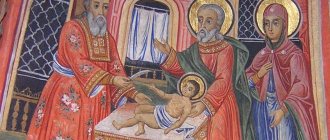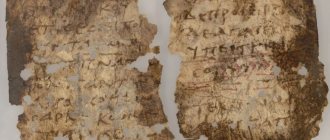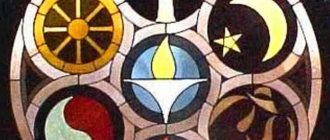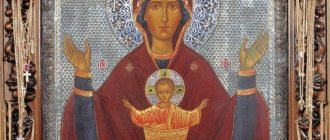The concept of "calendar"
The calendar is a number system for large periods of time, depending on the periodicity of the movement of various celestial bodies, such as the Sun or the Moon.
The concept itself arose thanks to debt books, on the basis of which people had to pay. Debt repayment was usually scheduled at the beginning of the month. These days were called Kalends. This is where the word calendarium comes from.
But different peoples considered completely different events to begin counting time. Thus, for the ancient Romans the starting point was the founding of Rome, and for the Egyptians it was the date of the emergence of a new ruling dynasty.
The need for a calendar
The need to measure time arose among people a long time ago. It is simply impossible to live without a counting system, be it measuring space (metrology) or time (calendar and chronology). The higher the level of culture and science, the more perfect the counting or measurement systems become.
Nature - or the Lord God, as one prefers - provided people with three periodic (observable even with the naked eye of a primitive person) processes that allow them to keep track of time:
1) change of day and night,
2) changing phases of the moon and
3) change of seasons.
On their basis, such concepts as day, month and year were formed. It is absolutely clear that the number of days in both a calendar month and a calendar year can only be an integer. Meanwhile, their astronomical prototypes - the synodic month and the tropical year - contain fractional parts of the day.
The synodic month (from the Greek “convergence”; during new moons, the Moon seems to converge with the Sun) is the period of time between two new moons; it ranges from 29.25 to 29.83 days (the reason is the ellipticity of the lunar orbit). The average length of a synodic month is 29.53059 days (= 29 days, 12 hours 44 minutes 3.0 seconds).
A tropical year (from the Greek - turn) is a period of time after which the height of the Sun above the horizon at noon, having reached its greatest value, decreases again. In other words, this is the period of time during which the Earth makes one revolution around the Sun. T = 365.24220 days.
Thus, neither the synodic month nor the tropical year contains an integer number of average solar days; therefore, all these three quantities are incommensurable. This means that it is impossible to simply express one of these quantities through the other, that is, it is impossible to select some integer number of solar years that would contain an integer number of lunar months and an integer number of average solar days. This is where all the complexity of the calendar system lies and all the confusion that has reigned for many millennia in the issue of counting large periods of time.
It is not surprising that the creation and improvement of calendar systems was previously available only to priests - intellectuals of antiquity, who determined the dates of holidays, which were both church and civil, and by which ordinary people checked the time. Suffice it to remember that the calendar according to which Europe lived for 1600 years (and the Russian Orthodox Church still lives) was introduced by the high pagan priest of Rome (Julius Caesar); The reform of this (Julian) calendar was carried out in 1582 by Pope Gregory XIII (the supreme Christian “priest”), and the chronology by which all humanity now compares time (the era from the Nativity of Christ, or Anno Domini, abbreviated AD) was developed and introduced in 525 g. Roman archivist Abbot Dionysius the Small.
Angel Day, May 31, male and female names
According to the Orthodox church calendar, May 31 marks 22 name days: 14 for men and 8 for women. The list of name days will help you choose a name for a boy or girl born on this day.
Name day is celebrated on May 31st
Men
Andrew from the ancient Greek name Andreas, derived from andros - “man”, “man”; there is also a translation of “courageous”, “brave”, “courageous”
Bogdan from Old Russian "Bog" (God) + "given" (given) - "given by God", "God's gift", "given by God"
Basil from the ancient Greek name Basileios - “royal, royal”
David from the Hebrew name David - “beloved”
Denis from the ancient Greek name Dionysios - “belonging to the god Dionysus”
Heraclius from the ancient Greek name Herakleios - “Hercules, belonging to Hercules”
Leo translated from Greek - “lion”, “king of beasts” from the Latin word leo - “lion”
Makar from the ancient Greek makarios - “blessed”, “blessed”, “happy”
Paul from the Roman family name Paulus - “modest”, small”, “insignificant”, “junior”
Peter from the ancient Greek name Petros - “stone”, “solid”, “reliable”
Semyon from the Hebrew name Shimon - “God heard”
Theodore translated from Latin means “gift of God”, “messenger of God”
Fedor is the modern form of the Greek name Theodoros (Theodoros, Theodoros) - “given by God”, “God’s gift”
Julian from the ancient Greek iulos - “fluffy, curly” translated from Latin - “from the family of Yuliev”, “July”
Women
Alexandra is the feminine form of Alexander, derived from the ancient Greek name Alexandros: alex - “to protect” and andros - “man”, “person”
Julia translated from Latin means “from the Yuli family”, “July” from the ancient Greek iulos - “curly”, “fluffy”
Euphrosyne from the ancient Greek name Euphrosyune - “fun”, “joy”
Claudia feminine form of Claudius, derived from the Roman generic name Claudius (from Latin claudus) - "to limp"
Christina is a feminine derivative of Christian, derived from the Latin name Christianus - “Christian”
Matryona from the Latin matrona - “matron, respectable married woman”
Faina from the ancient Greek name Faeine (Faini) - “shining”, “brilliant”
Julia translated from Latin - “from the Yuli family”, “July” from the ancient Greek iulos - “curly”, “fluffy”
Who started counting days and how?
Scientists believe that the first calendar was already in the year 5000 BC, when the Egyptians recorded the cyclical nature of weather changes. In those distant times, semi-nomadic pastoralists noticed that the Nile River flooded at the same time, and this coincided with the appearance of the star Sirius in the sky. When they did not make it before the river flooded, they lost their harvest.
Therefore, they began to carefully mark the beginning of the calendar circle, and then, using their notes, they determined when the river would overflow its banks, when the rains would come, when the drought would set in.
And calendar calculation was carried out according to the movement of celestial bodies and from the change of day and night: solar - according to the Sun, lunar - according to the Moon, lunisolar - according to the movement of both luminaries. In Ancient Mesopotamia, the Sumerians, by changing the shape of the Moon from a narrow crescent to a full ball and back, calculated the time interval - a month, which for them totaled 29.5 days. Recording each date of lunar appearance, observing solar rising and setting, they began to correlate the day-month-year.
In general, each ancient people managed to mark events that were important to them in their own way, which is why the year had a different number of days, and the calendar year itself began at different times. Thus, the Romans took their countdown from the founding of Rome, the Jews and Byzantines - from the creation of the world, the Egyptians - from the first day of each new imperial dynasty coming to power.
The Romans had only 10 months and only 304 days in chronology. And with all this diversity, doubtless, sooner or later confusion arose.
The ancient Roman Julius Caesar resolved the calendar problem. Once he visited Egypt and learned that the Egyptians counted 365 days between the floods of the Nile and the morning risings of Sirius, divided the year into 12 months of 30 days each, and added 5 more holiday days at the end. He gave the task to his astronomers to check why things were wrong in Rome.
They took Egyptian calculations with the annual movement of the Sun between the stars as a basis and calculated and agreed that 365 days add up to 1 simple year, and decided to make every fourth year a leap year, one day longer.
The leap year compensated for the “tails” of 0.25 days, because Alexandrian astronomers calculated the annual duration more precisely - at 365.25 days. This is how Caesar’s new calendar appeared - the Julian, which replaced the old Roman one. By the way, Caesar was also the first to order the New Year to be counted from January 1st.
And the names of the months among the Romans at first were like this:
- January - named after the god Janus;
- February - named after the god Februus;
- March - from the god Mars;
- April - from the Latin “to reveal”, because this month nature comes to life and buds bloom;
- May - named after the goddess Maya;
- June - named after the goddess Juno;
- quintilis, or fifth;
- sextilis, or sixth;
- September, or seventh;
- October, or eighth;
- November, or ninth;
- December, or tenth.
This is interesting! The Roman Senate thanked Caesar for the new, orderly calendar and gave Quintilis, the month when Julius was born, its name - July.
An amendment to the simple, calculated from the Sun, but not quite, as it turned out, accurate Caesarian calendar was made by Pope Gregory XIII. He introduced his chronology based on the cycle of the earth's revolution around the Sun and the change of lunar phases, and made it even more precise - at 365.2425 days, which turned out to be closer to the real length of the year.
In addition, astronomers noticed that according to the Julian calendar, church holidays, including the date of the most important of them - Easter, gradually shift every 128 years by a whole day, which was unacceptable for the church. As a result, they began to live according to the new style, which many European countries switched to in 1582; time was immediately moved forward by 10 days, and for some peoples, October 4, 1582 immediately became the 15th.
“What is different,” you ask, “this new style?” The Gregorian calendar in every hundred years considers the last year to be a leap only when its serial number is divisible by the number 4, for example, the 2000th, 2400th, while the Julian calendar considered any fourth year following three to be a leap year. simple. As a result of innovations, for every 4 centuries we “lose” three days, we do not move anywhere, and the extra days do not accumulate.
ABC for beginners of spiritual life
Hello, dear friends!
Lent puts a person on a spiritual path. On the one hand, we all have to work a lot: to carry out the feasible feat of abstinence, fasting and prayer. But the time of Pentecost itself, as many believers note, gives a person a lot. Fasting in itself was created for the improvement of man, for his own good. Therefore, if we spend this time with gratitude to God, then we really become closer to Him.
Here are 60 simple tips for beginners in spiritual life. However, these recommendations are relevant for any Christian. Of course, it is impossible to do them all at once, but you can start. Starting small, a person can definitely come to more.
ABC of spiritual life
1. When you wake up in bed, first of all, remember God and put the sign of the cross on yourself.
2. Don’t leave whatever prayer rule you have and start spending your day with it.
3. During the day, pray short prayers for every task.
4. For God to hear a prayer, you need to pray not with your tongue, but with your heart.
5. Let none of those around you be left in the morning without your sincere greetings.
6. Do not give up prayer when the enemy makes you feel insensible; He who forces himself to pray when his soul is dry is superior to him who prays with tears.
7. Your child should know the New Testament with your mind and heart, learn from it constantly, do not interpret the incomprehensible yourself, but read the patristic interpretations or ask your spiritual fathers for clarification.
8. Without confession and Communion there is no salvation. Do not forget to drink holy water with a thirst for the sanctification of soul and body.
9. Greetings to the Queen of Heaven: “Virgin Mother of God, rejoice...” say more often or at least every hour.
10. In your free time, read the writings of the Orthodox Fathers - teachers of spiritual life, and if you don’t have them, then persistently ask someone who has them.
11. In temptations and adversities, repeat the Psalter more and read the Prayer Canon to the Most Holy Theotokos: “We are supported by many adversities.” She is Our only Intercessor.
12. When demons throw their arrows at you, when sin approaches you, then sing the hymns of Holy Week and Holy Easter, read the canon with an akathist to the Sweetest Jesus Christ, and the Lord will loosen the bonds of darkness that have bound you. Call also to the Most Holy Theotokos and Guardian Angel. Read “Virgin Mother of God, rejoice...” many times.
13. If you cannot sing and read, then in moments of battle remember the name of Jesus, stand firm - and you will be healed by your crying. Even if you don’t understand the meaning of the words of the Jesus Prayer, repeat it anyway: the demons understand and will run away.
14. During fasting time, fast, but know that God is pleased not only with abstinence of the belly, but also with abstinence of the ears, eyes, tongue, and also abstinence of the heart from passions.
15. A person beginning spiritual life must remember that he is sick, his mind is in error, his will is more inclined to evil than to good, and his heart is out of purity from seething passions, therefore, at the beginning of spiritual life, everything should be aimed at acquiring spiritual health with humility.
16. Spiritual life is a constant and incessant war with the enemies of the day of salvation of the soul. Never sleep in your soul, your spirit must be alert, always call your Savior, the Mother of God and the Guardian Angel for help in every battle.
17. Be afraid to agree to sin and unite with sinful thoughts inspired in you by the approaching enemy. The one who agreed has already done what he thought about. If you are creeping in your thoughts, then break your heart and repent. The enemy will inspire: “You have already sinned in thought, commit a sin in deed.” Answer the mental killer: “I have sinned before my God, and I will repent before Him. And who are you?"
18. Remember, God desires your salvation and has done everything for your salvation, therefore, in order to perish, you must be careless.
19. Constantly ask the Lord: “Instill Your fear in my heart.” Oh, how blessed is he who has constant awe of God.
20. Give your whole heart to God without a trace and you will feel heaven on earth.
21. Your faith should be strengthened by frequent resort to repentance and prayer, as well as by communicating with people of deep faith.
22. Get yourself a memorial, write down there all those who hate and offend you, as well as the sufferers of our century and those for whom there is no one to pray, and remember them daily.
23. Seek constantly and tirelessly for works of mercy and suffering love. Without these works it is impossible to please God. Be the sunshine for everyone, mercy above all sacrifices.
24. Don’t go anywhere unless absolutely necessary, and don’t fuss around at home. The desire for wealth and multi-care are the enemy’s tricks for our time.
25. Talk as little as possible, laugh, be curious, be idle.
26. Never be idle; consider church holidays and Sundays to be the fulfillment of God’s works, and not sinful amusements or idle pastimes.
27. Love holy solitude.
28. First endure all insults in silence, then by reproaching yourself, and then by praying for those who offend you.
29. The most important thing for us is to learn patience and humility. With humility we will defeat all demons, and with patience we will defeat the passions that war on our soul and body. When we ask for humility in prayer, we ask that God allow some person to reproach us. Humility and love for enemies will not come by themselves. They need to be acquired by correctly enduring reproaches and humiliation.
30. During your prayer, do not show anyone but God your tears of tenderness and your zeal for salvation.
31. Consider an Orthodox priest an angel, a messenger of good news, sent to rejoice you and bring you deliverance.
32. Treat people as carefully as the heirs of the Great Kingdom, but also as carefully as with fire. Remember the words of the Savior that everything you do to your neighbor, you do to Himself. Our neighbor is our salvation or our destruction.
33. Forgive everyone everything and sympathize with everyone in their suffering.
34. Don’t just rush around with yourself, like a chicken with an egg, forgetting about your neighbor.
35. Whoever seeks peace here cannot have the Spirit of God in him; there is no love for God and for his neighbor in him.
36. Melancholy and confusion attack from lack of prayer.
37. Always and everywhere call on your Guardian Angel for help. His suggestions bring heavenly peace to the soul, and from the evil one - confusion of the spirit, even if the thoughts seem correct to us.
38. Always keep your heart crying for your sins. When you confess them and partake of the Holy Mysteries of Christ, then quietly rejoice over your liberation.
39. Know only your own indecency and shortcomings, and carefully guard against those of others. Do not destroy yourself by judging others; the one who condemns is the Antichrist. One is God's judgment, the other is human judgment. Weep for the weaknesses of others, so that they do not perish forever. He who weeps for himself does not condemn others, but loves them and wishes for them, as for himself, eternal salvation.
40. Do not believe any wishes, even your good ones, before they are approved by an experienced confessor. Don’t trust your heart, test yourself with the writings of the Orthodox Holy Fathers.
41. Every evening, confess to God all your sinful deeds, words and thoughts that occurred during the day. Previously, in monasteries, every evening the novices revealed their thoughts to the elder.
42. Before going to bed, make peace with everyone from the bottom of your heart.
43. You should not tell dreams to others and do not believe them yourself. More than once the devil has deceived and even destroyed those who believe in their dreams.
44. Fall asleep with the sign of the cross and the Jesus Prayer.
45. Night prayer is more expensive than daytime prayer.
46. Don’t lose touch with your spiritual father.
47. Thank God for everything.
48. You should always divide yourself into yourself and the enemy: avoid what your inner enemy wants.
49. Inner sorrow for one’s sins is more salutary than all bodily labors.
50. There is no better word in our language than “Lord Jesus Christ, Son of God, have mercy on me a sinner. Lord, save me, a sinner.”
51. Love all the church rules and bring your life closer to them.
52. Learn to be vigilant and always monitor yourself, especially your external feelings. It is through them that the enemy especially enters the soul. Watch your thoughts carefully.
53. When you recognize your weakness and powerlessness to do good, then remember that it is not you who save yourself, it is your Savior, the Lord Jesus Christ, who saves you.
54. Your faith must be unassailable, for a fierce enemy does not sleep, guarding your every step. But God loves a courageous soul that always trusts in Him.
55. No one entered heaven living a cool life.
56. We are brought closer to God by sorrows, labors and illnesses; do not grumble at them, do not be afraid of them.
57. As often as possible, with tenderness and contrition of heart, partake of the Holy Mysteries of the Body and Blood of our Lord Jesus Christ. You are alive only by them.
58. Never forget that death can snatch us away every minute, do not forget that Judgment and retribution are coming soon. Remember that you are always in the presence of God and under His omniscient gaze.
59. Remember also what the Lord has prepared for those who love Him and for those who do His commandments.
60. Read this alphabet at least once a week.
How to start a spiritual life
History of the calendar
The origin of the term “calendar” is attributed to the ancient Roman word “calends”, which meant the first days of each month - the day of repayment of debts and interest . Hence the calendar initially worked as a debt book.
Equal intervals of time calculation were based on the movement of the Sun and Moon, hence the lunar, solar and lunisolar calendars.
The modern meaning of the calendar is the division of time throughout the year into months, weeks and days of the week, indicating weekends and holidays.
Various nationalities kept their own calendars: for the Romans they counted the current year from the founding of Rome, for the Egyptians they counted the years of the ruling dynasty of the pharaohs.
The Julian calendar was invented by Julius Caesar in 46 BC, who grasped the pattern of natural phenomena and added two more months to the ten months of the year. The length of the year became 365.5 days . The beginning of the year was January 1. Before Julius Caesar, the Roman year was 304 days long and began on March 1 . He also introduced the concept of a leap year, but every 3 years its duration consisted of 366 days . This error was corrected by Pope Gregory XIII .
Pope Gregory XIII in 1582 introduced a new version of chronology, tied to the day of the vernal equinox - March 21, which until that moment had constantly shifted.
The new calculation was the most accurate and corrected the time shift, which amounted to ten days. The Gregorian calendar established the exact meanings of leap years. So those whose value is a multiple of 400 (for example, 1600, 2000) became leap years. The following years must be multiples of 4, but exceptions are multiples of 100. For example, 1896 was a leap year, but 1900, which came four years later, does not apply to it and the next leap year is 1904. The discrepancy between the Julian and Gregorian calendars is three days for every four hundred years.
Russia switched to the Gregorian calendar after January 31, 2021 , with February 14 beginning immediately after that date. This is where the Old New Year came from, which comes 14 days later.
The week began to be distinguished by days around the 3rd century, and the names of the days were tied to the celestial bodies:
- Monday – Moon
- Tuesday – Mars
- Wednesday – Mercury
- Thursday – Jupiter
- Friday – Venus
- Saturday – Saturn
- Sunday - Sun
The lunar calendar is based on the movement of the Moon and has a month of 29.53 days. Some Muslim countries live on the lunar calendar. Many gardeners adhere to the phases of the moon when starting planting.
Those who believe in its influence on creativity, money and relationships are guided by the Moon. It's no secret that even some people make appointments with a hairdresser based on the recommendations of the lunar calendar.
Registration for ABC of Fidelity
It's easy to register, just fill out:
- E-mail address;
- Password;
- Country and city of residence;
- Date of birth;
- Religion;
- Family status;
- Having children;
- Purpose of dating;
- Floor.
Next, we proceed to filling out the form and uploading photos. Please note that at the end of registration you are asked to enter a phone number to confirm rights to your profile in case you lose your password.
An email will be sent with a confirmation link. If you don’t click on it, the functionality of Orthodox dating Azbuka.ru will not open.
Errors
To evaluate different calendars, you can introduce an indicator such as its error - that is, the length of the year, calculated in solar days in accordance with a given calendar system.
As a standard, one could take the astronomical year, which in days is equal to 365.242198. This is the duration of a full revolution of the Earth around the Sun, calculated relative to the fixed stars, taking into account precession, that is, the rotation of the Earth's axis. A full cycle of precession takes 25,800 years, and in ancient astronomy it is known as the Platonic year.
Thus, if we take this movement into account, the Earth’s full revolution around the Sun will occur a little faster than it does within the solar system. However, from the point of view of gnomonics, it would be more natural to take the tropical year as a standard, that is, the interval between the two points of the vernal equinox. A tropical year is equal to 365.2424 days.
As will be clear, not all calendars are tied to solar cycles, so the solar accuracy indicator will not make sense for them.
When comparing calendars in terms of accuracy, it is worth keeping in mind that any calendar is a consolidation of temporary symbolism in the deep memory of the people. That is why ideas about time are extremely conservative and constant, and simply changing them, even for the sake of accuracy, is unlikely to work.
Calendars in primitive society
Yakut calendar cardi.
Kiowa Indian calendar on bison skin. 1889–92.
History of the calendar in Rus' and in Russia
Moscow popular print calendar, 17th century
In Ancient Rus', time was counted according to the four seasons of the year. A lunisolar calendar was also used, in which seven additional months were included every 19 years. There was a seven-day week, which was called week.
After the establishment of Christianity in 988, they began to count years according to the Byzantine calendar from the “creation of the world,” more precisely, from the “creation of Adam” - from Friday March 1, adopting the Byzantine version of this date - 5508 BC, but with some deviations. In Byzantium, the year began on September 1. In Rus', according to ancient tradition, spring was considered the beginning of the year, so the year began on March 1.
During the time of Ivan III in 1492 (7000 from the “creation of the world”) the beginning of the year was moved to September 1. The first printed church calendar in Russia was made on May 5, 1581 by Ivan Fedorov.
The chronology in force in Russia from the “creation of the world” was replaced by the chronology from the Nativity of Christ by Peter I on January 1, 1700. By decree of the emperor of December 19, 7208, from the “creation of the world” (December 19 (29), 1699) [4] after December 31, 7208, from the “creation of the world” followed January 1 (11), 1700 from the Nativity of Christ, “... and the future On the 1st of January a new year, 1700, and a new century will come..." On December 28, 1708, the first civil calendar was issued.
The difference between the two chronology systems for the period from 1492 to 1700 is 5508 years for the period from January 1 to August 31, and from September 1 to December 31 - 5509 years, since the new year according to the old chronology began in September. (September 1, 7208 from the “creation of the world” = September 1, 1699 from the Nativity of Christ. 7208 − 1699 = 5509 years. And January 1, 7208 from the “creation of the world” = January 1, 1700 from the Nativity of Christ. 7208 − 1700 = 5508 ).
The Gregorian calendar was introduced in Soviet Russia on February 14, 1918. From 1930 to 1940, the Soviet revolutionary calendar was used.
Soviet revolutionary calendar
During the operation of the Soviet revolutionary calendar, in parallel, in some cases, the Gregorian calendar was used. On August 26, 1929, the Council of People's Commissars of the USSR, in its resolution “On the transition to continuous production in enterprises and institutions of the USSR,” recognized the need to begin a systematic and consistent transfer of enterprises and institutions to continuous production from the 1929-1930 business year.
The transition to “continuous work”, which began in the fall of 1929, was consolidated in the spring of 1930. A unified production timesheet was introduced. The calendar year had 360 days and, accordingly, 72 five-day periods. It was decided to consider the remaining 5 days as holidays.
The picture shows a report card for 1939. In fact, this is a calendar for any year, the only difference is the presence or absence of February 29. Therefore, on the one hand, this calendar can be called permanent. However, the six-day days (that is, weeks) were not continuous, since the thirty-first days of the month were not included in the six-day days. It is also interesting that after the fourth day of the six-day period—February 28—the first day of the six-day period immediately follows—March 1.
The week in the USSR in 1929-1930 consisted of five days, while all workers were divided into five groups, named by color (yellow, pink, red, purple, green), and each group had its own day off (non-working day). week (the so-called “continuous”). Despite the fact that there were more days off (one per five-day week, instead of one per seven-day week previously), this reform was unpopular, as it significantly complicated personal, social and family life due to the discrepancy between the days off of different members of society.
Despite the fact that chronology continued according to the Gregorian calendar, in some cases the date was indicated as “NN year of the socialist revolution,” with a starting point of November 7, 1917. The phrase “NN year of the socialist revolution” was present in tear-off and flip calendars until 1991 inclusive - until the collapse of the USSR. As an artistic device, the countdown of years from the October Revolution is present in the novel by M.A. Bulgakov "The White Guard".
Types of calendars
Converting from one chronology system to another sometimes causes significant difficulties due to the different lengths of the year, as well as the unequal start date of the year in different systems.
In the Ancient Greek calendar
the year contained 354 days. However, due to the discrepancy with the solar year by 11.25 days, every eight years ninety additional days were added to the year, divided into three equal months.
Originally Ancient Roman calendar
consisted of 304 days divided into 10 months, and the first month of the year was considered to be the first of March. Subsequently, the Roman calendar underwent numerous reforms, in particular, two more months were added, and the date of the new year was changed from the first of March to the first of January.
Introduction of the Julian calendar
was also associated with the name of Julius Caesar, who sought to link calendar dates with seasonal natural phenomena. Julius set the length of the year to 365.25 days. According to the Julian calendar, a leap year occurs every four years, the duration of which is 366 solar days. Focusing on the solar cycle made it possible to avoid unnecessary “insertions” into the calendar (with the exception of leap years), as well as to bring calendar dates closer to the natural cycle.
Gregorian calendar
was introduced under Pope Gregory XIII and designated as the “new style” to replace the “old style” (Julian calendar). The purpose of introducing the Gregorian calendar was to return the real date of the vernal equinox - March 21, established during the Council of Nicaea, which approved Easter.
The Gregorian calendar is as close as possible to the tropical year, the difference is only 26 seconds. This difference will reach a day in 3333 years, but to compensate for this error, a special rule was introduced in the Gregorian calendar based on the fact that out of every 400 years three leap years should be excluded.
This could correct the calendar so much that an error of one day would occur only after a hundred thousand years. The Gregorian calendar was introduced in Russia only in 1918; the difference between the new and old styles in the 21st century was 13 days.
Main types of calendars:
The basis of any calendar is the cyclicity of two main celestial bodies - the sun and the moon. Therefore, the following main types of calendars have been identified:
Lunar calendar, which is based on the cyclic change of lunar phases that occur during the synodic month. It is equal to 29.53 days, and a year is 354.37 days. For every 30 years, due to fractional parts, 11 extra days accumulated. A typical example of a lunar calendar is the Muslim calendar.
Solar calendar , which is based on the annual solar cycle of 365.24 days. The main dates he focuses on are the days of the solar solstice and equinox. A typical example of a solar calendar is the Gregorian calendar.
Lunisolar calendar, which is based on an attempt to combine two cycles - solar and lunar. A typical example of such a calendar is the Jewish calendar.
Sources
- https://www.syl.ru/article/307127/chto-takoe-kalendar-istoriya-vozniknoveniya-i-vidyi
- https://azbyka.ru/days/p-istorija-kalendarja
- https://shkolala.ru/proekty/tsifryi-i-chisla/kak-poyavilsya-kalendar/
- https://printyard.net/articles/raznoobrazie-kalendarej-istoriya-letoischisleniya/
- https://nauka-prosto.ru/page/istorija-kalendarja/
- https://bigenc.ru/physics/text/2035097
- https://wiki2.org/ru/%D0%9A%D0%B0%D0%BB%D0%B5%D0%BD%D0%B4%D0%B0%D1%80%D1%8C
- https://ency.info/earth/izmereniye-vremeni/64-kto-p
- https://fotocalendar.su/history-calendar.php
- https://kratkoe.com/kratkoe-soobshhenie-o-kalendare/
[collapse]










